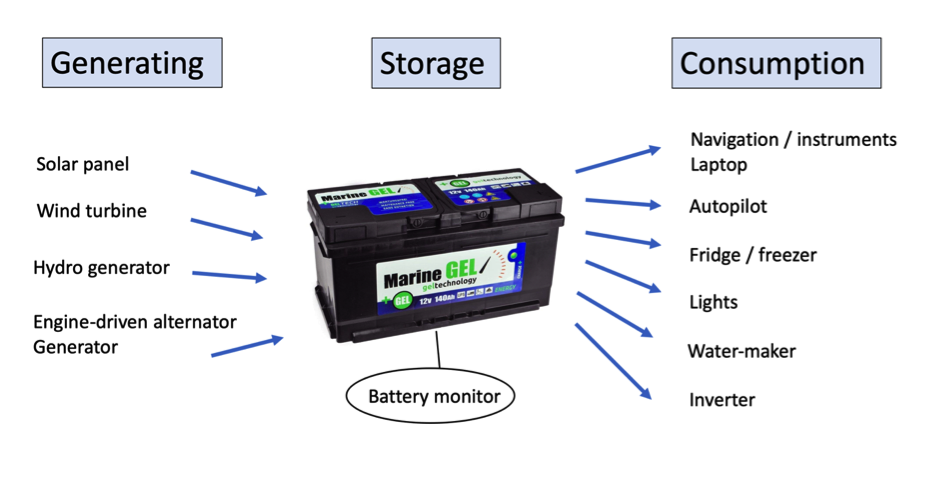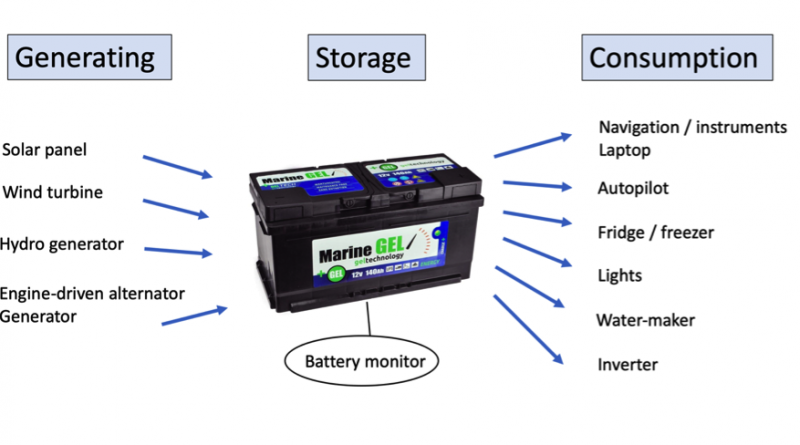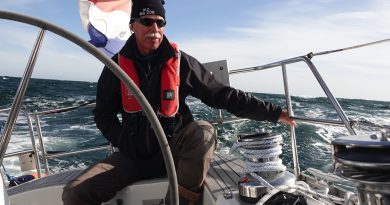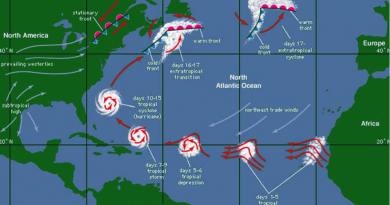RYA-tips #29 – Blue water sailing – boat electrics 2
Zeilen is een combinatie van wetenschap en kunst. En voor wie daar meer over wilt weten schrijft Albert De Nijs, instructeur bij de De Zeezeilers van Marken wekelijks een rubriek met tips&trics van de Royal Yachting Association.

In the previous article we discussed the consequences of our choices on boat electrics when fitting out a blue water cruiser. To optimize the 12V system, our aim should be to lower consumption and increase both storage and charging capability.
Lower consumption
Lowering consumption is the most logical place to start. As discussed already, power consumption reflects the amount of installed comfort. Still, with some simple measures we can bring our daily consumption down.
The autopilot is used continuously, we can make its life easier by careful trimming the sails. If the autopilot doesn’t have to steer, power consumption is considerably reduced.
-Use it as you produce it-, limit the use of power-heavy equipment (water-maker, freezer, inverter) to those times when the engine is running. Some fridges can work harder when the engine is on and store energy in a holding-plate, reducing power requirements later on.
Switching to LED lights, dimming screens and switching off unnecessary equipment helps in reducing consumption. For example, a normal tri-colour light is rated at 25W (2A), while the LED version uses only 1.9W (0.16A). For a night sail (8 hrs) that reduces consumption from 16Ah to just 1.3Ah!
Increase storage capacity
There are two ways to increase the storage capacity, installing more batteries, or switching to a different type of battery. Space is limited, so we’ll have a look at different sorts of batteries.
Standard domestic batteries are liquid filled (wet acid) deep cycle batteries. They maintain high voltage (V) under moderate load, and although relatively cheap, come with drawbacks.
These batteries should not be discharged below 50% SOC, and cannot accept an unlimited charging current. A 120Ah battery will not absorb more then 30A, even if the alternator output is higher.
Gel or AGM (absorbent glass mat) batteries have some clear advantages. Their acceptance rate is higher (50% for gel, 100% for AGM) allowing quicker charging. AGM batteries can be discharged to 80%, increasing the amount of usable stored energy. Lithium batteries are even more expensive, but pack more power for their weight/size, and will become the battery of choice in the future.
A battery monitor is a good way to keep an eye on your batteries. These devices monitor current going in-and-out of your battery bank. They indicate, amongst others, the State of Charge (SOC) and the number of hours remaining at present usage until the SOC drops below a predetermined level.
Increase generating capability
The best way to generate the required energy is to diversify and use both green and fossil energy. Installing a high output alternator on the engine or generator reduces charging times if your batteries can accept the higher charging current (alternator output 25-30% of the installed battery capacity).
An interesting option is a hydro generator (watt&sea), an immersed propeller generating electrical power while sailing. At 5kts boat-speed it supplies 8A, enough for electrical autonomy!
Solar panels (daylight only, Latitude and placement dependent), wind turbines (available 24hrs, but depending on apparent wind) and hydro-generator (speed > 5kts) should keep up with your daily electrical power requirements. The engine-driven alternator or generator can be used as back-up.
Albert de Nijs, Dutch Offshore Sailing Academy




